What if South Korea's future wasn't powered by decades-old fossil fuels but an elemental game-changer: hydrogen? Believe it or not, this clean fuel is about to make an explosive impact—and it's starting now.
With climate change no longer a distant threat but an immediate challenge, South Korea is racing to adopt green energy solutions. Hydrogen technology might just be the secret ingredient to cracking this global puzzle. Everyday tools can transform the future, and the revolution is unfolding faster than you think.
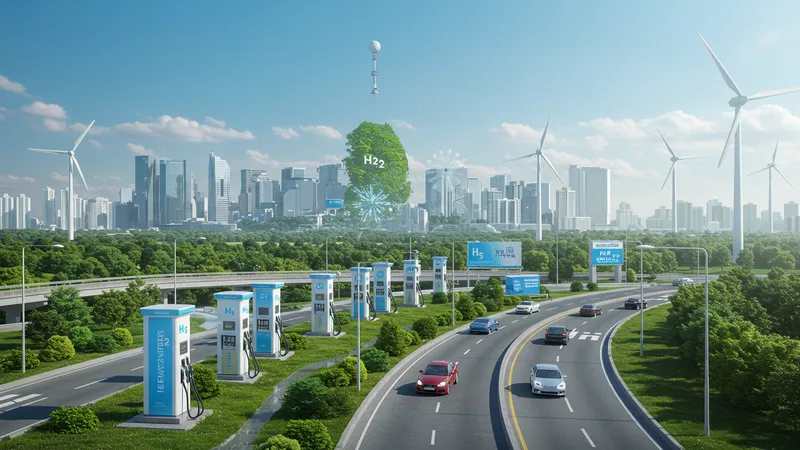
South Korea isn’t just making strides in technology by following the traditional playbook—it's rewriting it. Imagine a country that's investing billions into green hydrogen as if diversifying an investment portfolio. But here’s the kicker: they're harnessing not just resources but reshaping public policy to create a clean-energy haven by 2050. And that's not even the wildest part…
How about this for a twist? Conventional wisdom says renewable energy sources like wind and solar are the sole contenders. But hydrogen stands poised to outshine them, turning waste into wealth—literally! By leveraging its abundant water supply, South Korea is uniquely positioned to execute a large-scale hydrogen strategy unlike any other nation. What happens next shocked even the experts…
As we delve deeper into South Korea’s green energy revolution, you might wonder why they've placed such significant bets on hydrogen. While solar panels and wind turbines grab headlines, hydrogen offers something they don't: massive, efficient, long-term storage capabilities. Instead of faltering on cloudy or still days, hydrogen can be stored and transported easily, ensuring energy consistency. But there’s one more twist: its high energy density means it can power heavier industries currently reliant on fossil fuels.
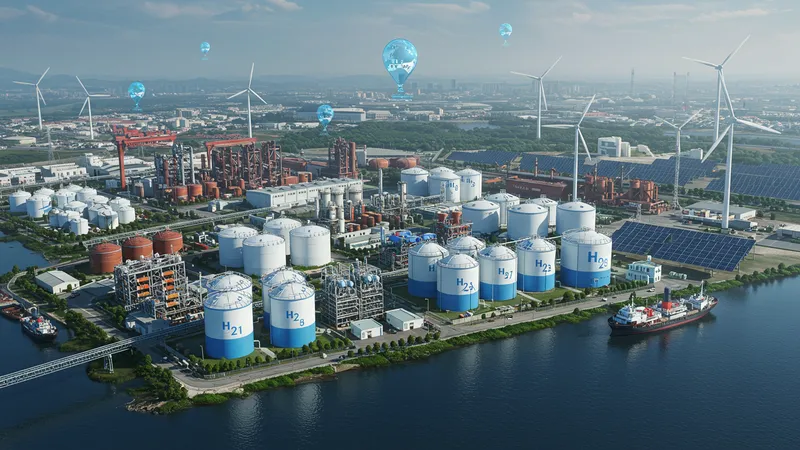
Let's discuss scale, shall we? South Korea’s big industries, like steel and shipbuilding, require solutions that solar and wind, by virtue, struggle to provide. Enter hydrogen, enabling industrial giants to decarbonize without pausing operations. Here’s an insider tip: by setting the stage for wide industrial use, South Korea is planning to transition not just its power grid, but its entire industrial backbone!
Resilience in energy is key. Unlike solar and wind, which often depend on geography and environmental conditions, hydrogen offers unrivaled reliability. It’s versatile enough to support both everyday commuters and cargo fleets, ensuring every prong of transportation can convert to renewable energy without sacrificing performance. What you read next might change how you see this forever.
South Korea's government is relentlessly pursuing policy adaptations to usher in this hydrogen revolution. These include tax incentives for companies adopting hydrogen tech, grants for research and development, and strategic partnerships with private sectors. But the masterstroke? International collaborations are leveraging global expertise to accelerate local implementation. The hidden costs are outweighed by long-term benefits, yet that's not all…
To appreciate why South Korea is betting so heavily on hydrogen, let’s dive into the technology itself. One standout is the hydrogen fuel cell, often described as a battery-like powerhouse capable of converting chemical energy directly into electricity. Unlike traditional batteries, they never run out as long as hydrogen is supplied. But hold on, the real magic happens when wastewater becomes a source! Imagine not just recycling—rather, re-energizing water byproducts into valuable fuel.
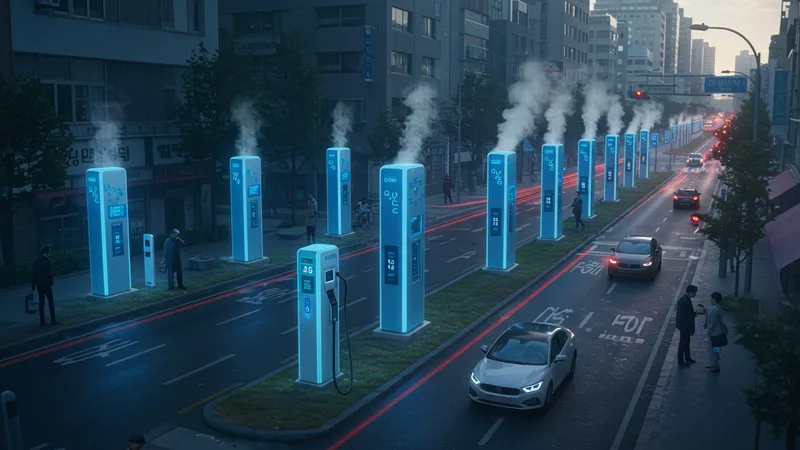
Fuel cells, beyond providing electricity, produce zero harmful emissions, unlike combustion-based technologies. Their byproducts are nothing but water and heat, perfectly fitting South Korea’s vision of a sustainable tomorrow. While it may sound like a perfect story, the innovation comes with challenges such as developing an intricate infrastructure to support widespread use. But look deeper: advancements are being made every day to scale efficiency and reduce costs.
Enterprising companies in South Korea are not just sitting on the sidelines. Giants like Hyundai are leading the charge with their hydrogen-powered vehicles that rival any electric car in performance while boasting refueling times as quick as gasoline cars. Talk about a complete automotive transformation! But could there be more to this revolution than just clean cars? Undoubtedly, and it involves pushing hydrogen into home heating and urban areas.
Navigating these energy waters isn't just for corporate juggernauts. Small and medium enterprises (SMEs) are finding a sweet spot by specializing in localized hydrogen solutions that meet specific community needs. These smaller players are crucial, creating jobs and driving innovation from the grassroots up. While opportunities abound, challenges lie ahead—some you wouldn’t expect, but more on that next…
South Korea’s hydrogen economy is set to become a trillion-dollar opportunity, reshaping not just the energy landscape but the entire economic framework. As jobs pivot from traditional fossil fuels to this exciting new sector, the nation could see a surge in employment rates. Particularly, new career opportunities may open up in research, infrastructure development, and hydrogen production itself. But here’s the kicker, the transition isn’t just about numbers—it’s about repositioning the global economic power balance.
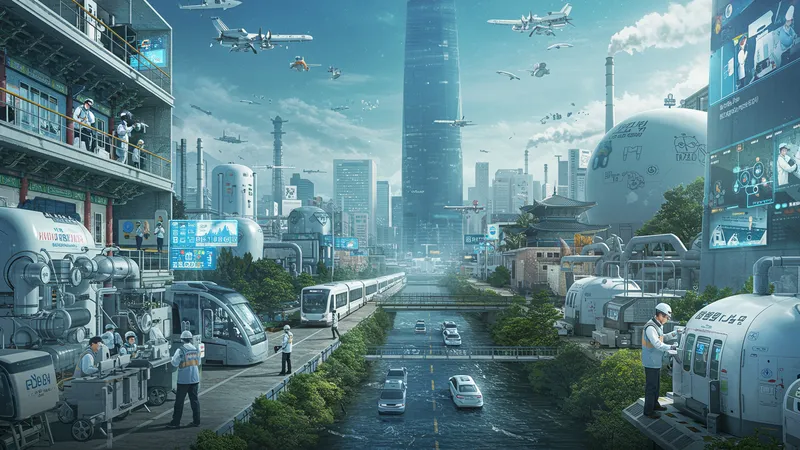
With hydrogen set to reduce dependency on imported fossil fuels, South Korea paves the path for newfound economic independence. Imagine unshackling a nation from unpredictable oil markets and offering energy security unlike ever before. This prospect influences not only domestic discussions but also international power dynamics. Could hydrogen be a geopolitical game-changer? The early signs indeed suggest so, but wait until you see the full picture...
What’s particularly fascinating is how the South Korean government sees this transition as a pillar for export growth. As the country invests in hydrogen technology, it stands to become a leader in exporting both hydrogen and the surrounding technology. Sound far-fetched? Not when you consider that software and manufacturing expertise in-country are setting a benchmark globally. It’s no longer just about infrastructure; it's about shaping future industries and carving global niches.
Yet, skeptics wonder about the possible hiccups in this plan. Critics question the feasibility of scaling, logistics, and integrating hydrogen with current infrastructure. However, the steps being taken provide robust blueprints for overcoming hurdles. Within challenges lie opportunities; so what’s next in this complex puzzle? The revelations might astonish you...
Believe it or not, hydrogen isn’t just wooing scientists and governments; it’s catching the eyes of celebrities and influencers who can sway public opinion. High-profile figures are embracing hydrogen-powered vehicles, lending their massive platforms to promote sustainable alternatives. But there's more: these endorsements are more than skin-deep, often involving collaborations that dive into advocacy and innovation funding. Have you considered celebrities as catalysts in this growing green narrative?

Celebrity partnerships are pushing hydrogen power into the mainstream, accelerating its adoption across consumer bases worldwide. Consider this: a famous actor not only investing in, but also championing a brand of hydrogen vehicles significantly increases public interest and even faster market penetration. Could hydrogen become as mainstream as hybrid cars, thanks to this newfound glamor?
The phenomenon doesn’t stop at on-screen talent. Influential tech entrepreneurs are backing hydrogen startups, merging star power with industry acumen to turbocharge development. These endorsements aren’t just hashtags and ads—they catalyze strategic shifts by opening doors to previously inaccessible funding and partnerships. But despite this glam push, challenges persist in aligning public perception with intricate technological realities.
The celebrity tide doesn’t only sweep consumers off their feet but sparks necessary conversations about sustainable goals and collective responsibility. As discussions shift, could public sentiment flip from skepticism to advocacy? While this enthusiasm is promising, it needs a strong foundation in reality to truly flourish. How it all unfolds next could take industry watchers by surprise...
Picture a world where your car, home heating, and even large-scale industries are fueled by nothing more than water. Hydrogen is primed to redefine how we interact with natural resources, presenting environmental benefits beyond imagination. The beauty of hydrogen lies in its essence—clean, renewable, and abundantly available. But here’s the rub: immense potential lies within large-scale water electrolysis, a process tearing water molecules apart to release hydrogen, zero emissions attached.
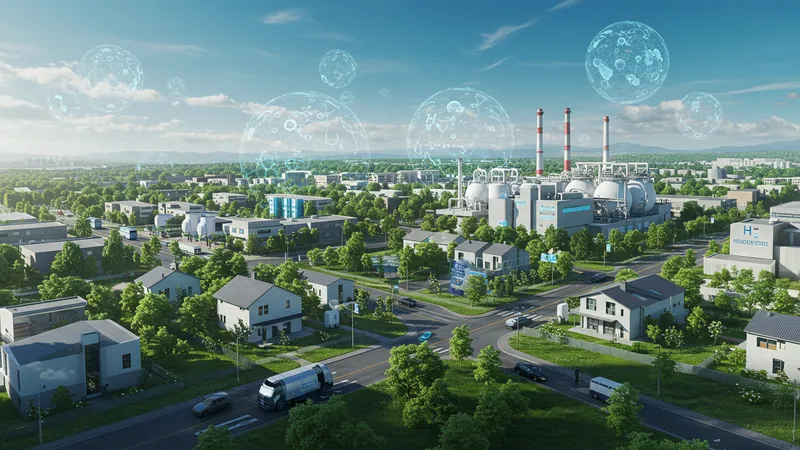
Hydrogen strategies are sculpted to address key environmental concerns—think of reducing air and water pollution levels traditionally associated with fossil fuel consumption. Out with the old, in with the new such that urban centers face revitalized air quality, promising healthier living environments. And yet, hurdles abound regarding the energy input required for hydrogen production. These challenges, however, are actively tackled through evolving technologies that promise efficiency gains and cost reductions.
Consider vertical integration, where companies not only produce hydrogen but utilize byproducts in subsidiary processes or configurations. This holistic approach dives deeper into circular economy principles, optimizing resources at every step. Here’s the kicker: some would call it economically viable magic, where waste disappears as quickly as it is generated! Efficiency becomes synonymous with sustainability, but can they scale this breakthrough consistently?
Enter collaborations pushing for strategic environmental alignment beyond borders. South Korea taps into alliances that stretch from the European Union to North America, borrowing credible insights to jump regulatory and technological hoops. While the playing field is global, regional variations make this task no walk in the park. Curious about how these collaborative networks will weave green fabrics across nations? You haven’t seen anything yet…
On the societal front, embracing hydrogen isn’t just about technology; it’s about shifting paradigms and attitudes. Public acceptance remains a vital component, often requiring thoughtful campaigns that illuminate hydrogen's advantages over commonly accepted energy forms. But here’s the twist: unlike energy revolutions that meet skepticism head-on, hydrogen is leveraging existing cultural touchstones to gain traction, seamlessly integrating into everyday life.
Public campaigns position hydrogen as not only feasible but desirable, appealing to communities eager for cleaner alternatives. Celebrities and influencers serve as powerful conduits, narrating hydrogen's benefits in ways that resonate personally. Picture a grassroots movement where acceptance isn’t just passive but actively sought after. What might cause such rapid embracement over standard grid alternatives? A mix of necessity and narrative.
The speed of adoption is amplified further by hybrid initiatives where public transport systems gradually incorporate hydrogen buses and trains. City dwellers are witnessing firsthand hydrogen’s potential—clean rides, no fuss, no fumes. As curiosity turns to reliance, skeptics become believers, lending newfound credibility to hydrogen-associated advancements. What if community drivers could redefine infrastructure needs nationwide?
Yet, public acceptance, like any cultural shift, isn’t without its friction points. Questions loom about safety profiles, robust infrastructure, and hidden costs. Answers, however, lie in transparent communication and adaptive policies fine-tuned through real-world experiences. Surprises await those assuming hydrogen remains a choice rather than it gestating into necessity. How might its image reshape beyond just power generation? The surprises haven’t stopped yet...
Behind hydrogen's rise in South Korea lies a torrent of forward-thinking regulations and policies sparking investment-friendly environments. Unlike cumbersome red tape, new initiatives aim to streamline approval processes, offering incentives that attract innovations and investments. But here's the unexpected part: these policies are dynamic, constantly evolving to engage both domestic and international stakeholders. In essence, it’s a smorgasbord of regulatory creativity paired with strategic oversight.
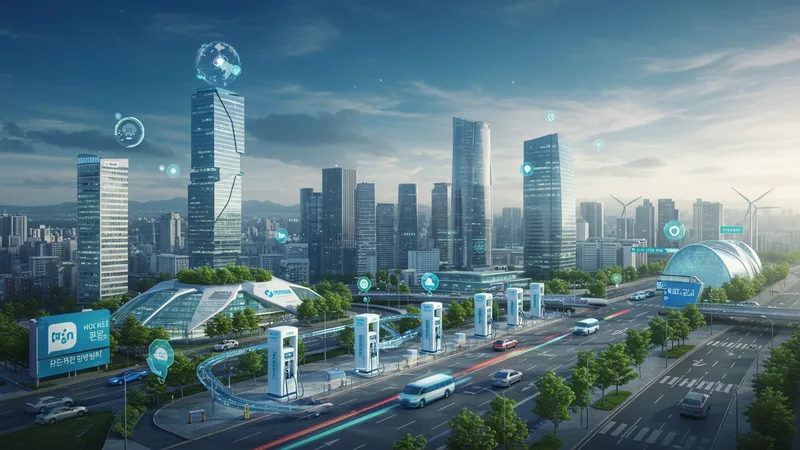
Driven by a national commitment to emissions goals, regulatory frameworks prioritize renewable energies like never before. Policymakers leverage agile legislations that address current industry realities, preparing to adapt fast-paced global changes. Intriguingly, these shifts don’t just encourage clean energy production but target reduced transition costs. What could turn complex bureaucratic webs into innovational pathways? Guess what? Strategic foresight and relentless adaptability shape this narrative.
Investment in infrastructure development remains a critical policy pillar, powering academia, and private industries alike to hurdle initial financial barriers to entry. Incubating hydrogen-friendly projects, grant allocation fosters rapid scaling, becoming models for private-public partnerships. Wouldn't such alignments guide swift real-world advancements previously stifled by financial overshadowing? It’s not just theory; it's innovation alive and well, skating along political currents.
Crucial bilateral agreements extend regulatory spheres beyond South Korea's border, ensuring standards remain internationally competitive. Such ventures unify economic visions and foster geographic collaborations, merging science with societal consciousness. In this quest for sustainable adaptation, might laissez-faire regulation turn into strategic wins? No easy answers exist here, but innovative strides rise amidst uncertainty. How harmoniously these developments pace forward remains to be seen...
Could hydrogen investments position South Korea as a green leader globally? With economic initiatives deeply rooted in clean ambitions, the country stands poised to direct its scientific prowess and technological agility toward nuanced energy solutions. But here’s the kicker: ambition extends beyond filling the energy gap; it seeks a dynamic positioning as a renewable technology exporter, redefining its geopolitical clout.

Technological leadership bridges interdisciplinary expertise, translating into actionable projects and scalable modules for transnational applications. South Korea’s growing hydrogen industry acts as a bellwether, guiding renewable agendas while expanding its influence worldwide. Curious about their secret sauce? Artificial intelligence and data analytics streamline operational efficiency while partner networks optimize supply chains.
With heightened interest comes heightened responsibility. A visionary approach intertwines traditional industry know-how with modern innovation strategies, advocating for sustainable research extensions. But could these pursuits face challenges around ethical considerations alongside ubiquitous artificial intelligence utilization? More than just technical prowess, ethical foresight might be pivotal.
South Korea embarks on leveraging cross-border collaborations and talent mobilization initiatives, cascading knowledge across international lines. Chances follow those who innovate. Fresh partnerships uncover unique pathways through exploratory ventures stretching global landscapes. Might ambitions now redefine existing systems, pivoting toward global resilience frameworks? These glimpses toward harnessing distributed efforts shine brightly, casting hope upon this uncertain journey...
Transitioning an entire nation's infrastructure to hydrogen is no minor feat—it’s a granular and deliberate process. Imagine redesigning existing pipelines, refitting distribution networks, and creating fueling stations that accommodate this future-ready vision. But there’s a hidden gem: the adaptability of this overhaul underscores South Korea’s willingness to rethink practically each component of its energy network.
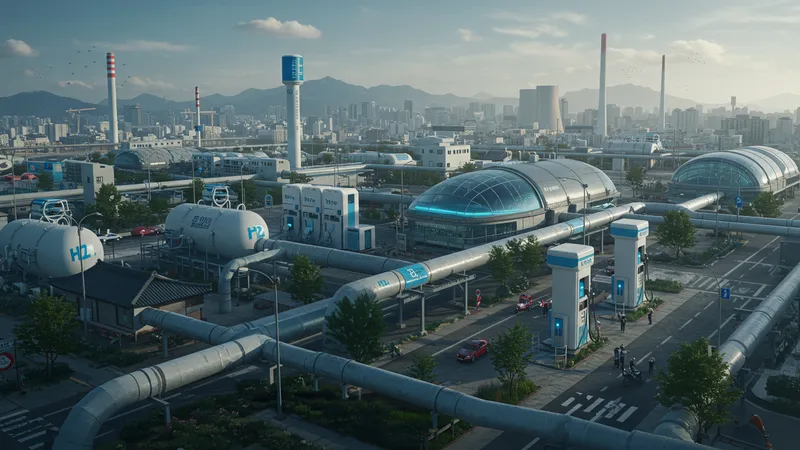
Retrofitting existing systems hints at ingenuity, enabling cost-effective adjustments rather than constructing from scratch. This flexibility drives South Korea toward significant financial savings that translate into long-term dividends. Equally compelling is the duality of incorporating hydrogen compatibility alongside dominant energy resources. Can old and new harmonize while experts navigate modernization spills and technical capabilities?
As ubiquitous connections replace aging constructs, hydrogen’s infrastructural demands reshape timelines, transforming urban landscapes. Refueling stations morph into hubs catering to growing hydrogen-powered fleets, redistributing transit nodes across urban corridors. But this transformation begs involvement beyond governments; it requires communal participation and input. On whose shoulders does responsibility rest as hydrogen emerges mainstream? A collective journey reimagines entire cityscapes.
In tandem with infrastructure upgrades, utilization-specific plans dovetail national aspirations exceeding simple energy transitions. Long-term agendas condition hydrogen’s role beyond power consumption, integrating it within urban logistics, heating frameworks, and community initiatives. South Korea capitalizes on learning through collaborative engagement, establishing blueprints for energy-ready cities. Captured, coveted competencies encapsulate regional aspirations, reflective of a sustainable strategy blossoming globally...
Despite South Korea’s agile maneuvering toward a hydrogen economy, practical hurdles remain. Financial obstacles top the list—initial costs associated with hydrogen production, infrastructure revamps, and technological evolution. However, the determination to scale these fiscal walls showcases government, private sector, and community synergy. Expect unfurling partnerships exploring untapped funding channels guided by an unwavering sustainable vision. But don’t hold your breath yet; political landscapes continue shifting...
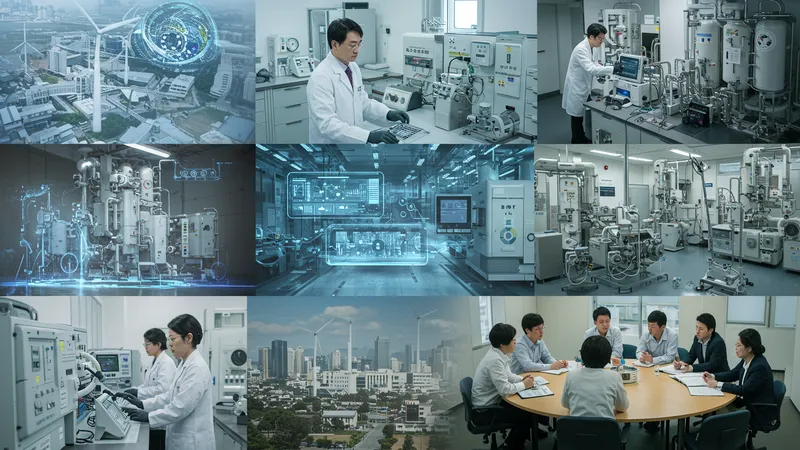
The technology adoption curve mirrors financial challenges, often stalling ambitions while stakeholders sync methodologies. Herein lies perceived limitations: evolving hydrogen requires substantial R&D investment, unraveling unknowns through progressive trial iterations. Innovators step ahead, but could reactive sectors risk lagging behind markedly? Prepare yourself—patience becomes a virtue through calculated endeavors.
Additionally, resource allocation battles remain fierce. Competing interests gamble limited resources, necessitating tactical reallocation strategies beyond immediate runs toward long-term dividends. Conversations envelop ethical resource disbursement paired with pragmatic foresight. Could increased access explore synergistic collaborations or environment-first innovations? Realignments flirt with new perspectives, weaving born-digital threads surrounding environmental justice?...
Policy remains intricately woven into South Korea's energy tapestry, emphasizing alignment, adaptability, and responsiveness. Adept political stewardship reconciles regulatory implementations with national ambitions amidst evolving worldviews and activism. Yet, varied interpretations demand concerted dialogues that harmonize societal expectations with tangible outcomes. What awaits beyond these burgeoning horizons? Stay tuned to recognize evolving inclusivity and intercollegial dialogues converging expectations...
In technical symphonies performed across South Korea, fuel cells harmonize as pivotal instruments. While often overshadowed by flashier hydrogen narratives, these power cells orchestrate transformative electrification seamlessly integrating across sectors. Imagine widespread settings—from residential dwellings to institutional giants—pivoting toward uncompromised efficiency realized through resilient outputs! But consider this: what empowers these cells transcends commonplace assumptions.
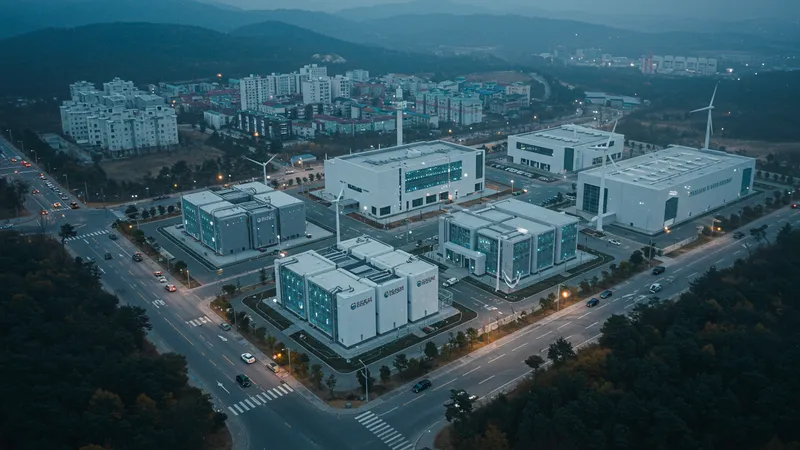
Fuel cells gain acclaim through adaptive versatility, seamlessly slotting across vehicular lanes, powering fleets, or settling infrastructural demands flexibly. Unlike battery alternatives constrained by finite resources, these dimensional contraptions dance nimbly, extracting maximality from minimality. Skim beneath surfaces—widespread symbiotic integrations address localized capacity heating condundrums spotlighting exemplar foresight! Can receptivity shatter glass-ceiling constraints?
Performance statistics vindicate hydrogen’s appeal, detailing returns far exceeding modest anticipations. Within industrial veins, pursuing reliability over speculative gains legitimizes paradigm shifts unmissable amidst reinvigorated economic strategies. Beyond singular promises, multi-sector benefits remain undeniable. But could such gains push sustainability beyond the predictable boundaries traditionally observed surrounding hydrogen applications?
Fuel cells provide unrivaled adaptability—when positioned within hydrogen narratives—forming incontrovertible touchpoints demystifying unknowns interwoven throughout ambitious energy transitions. Unexpected collaborations materialize, rewriting harmoniously synchronized trajectories aligned with dynamic expectations. Securing these functional giants within previously known networks reveals performance potentials previously untapped. Are surprising connections embedded within recognized frameworks bound to forge novel illumination amidst transformative visions?
South Korea’s green endeavors extend beyond national frontiers, courting international partnerships focused on collaborative innovation. Global networks drive mutual benefit, where South Korea’s energy visions blend seamlessly within an expansive consortium observable across geographies. Partner nations advance collective progress through shared dreams—a joint commitment affirms accountability amidst formidable global challenges. Curious about which coalition arises anew?

At the heart of these partnerships resides know-how exchanges, where technological innovations and market insights propagate knowledge gardens amongst locales. However, unique technological confluence necessitates balancing ideological frameworks ensuring symbiotic interactions thrive unobstructed due to arduous regulative pathfinding. As contributors access expansive scientific resources prepared to seed global commons evolution, unexpected outcomes rival anything dreamt thus far! Which palpable transformations may await societal landscapes rewritten collectively?
Strategic endeavors support responsive strategies while securing every pacing initiative within renewed assurances targeting systemic reconfigurations beyond existing conventions. Enterprising teams across borders leverage replicated innovations demonstrating pragmatic capacity-solving capabilities previously deemed inconceivable. Perhaps these collaborations cultivate mutually trustworthy outlooks regardless of complex negotiations intertwining energy evolutionary aspirations amidst distinct national philosophies...
Meanwhile, communal understandings embrace knowledge integration across borders, tapping multifold experiences irreversibly molding universal collaboration focused upon global engagement. Amidst these dialogues surfaces where transparency fosters resistant pathways that manage socially embedded adaptations harmonized universally. Perhaps intergenerational dialogues celebrate unforeseen benefits witnessed personally beyond technological trajectories shared collectively... It isn't merely energy awareness but profound integration recalibrating global networks...
How will South Korea’s hydrogen ambitions sculpt tomorrow’s energy canvas? Internal resilience intertwines innovative technology applications for unparalleled human experience discoveries. Beyond executing visionary purpose, what broader narrative dissects a unified momentum dynamically shaping evolving perspectives amidst envisioned landscapes? Could navigating forthcoming challenges enable environments poised to explode creatively amidst futuristic technological frameworks?
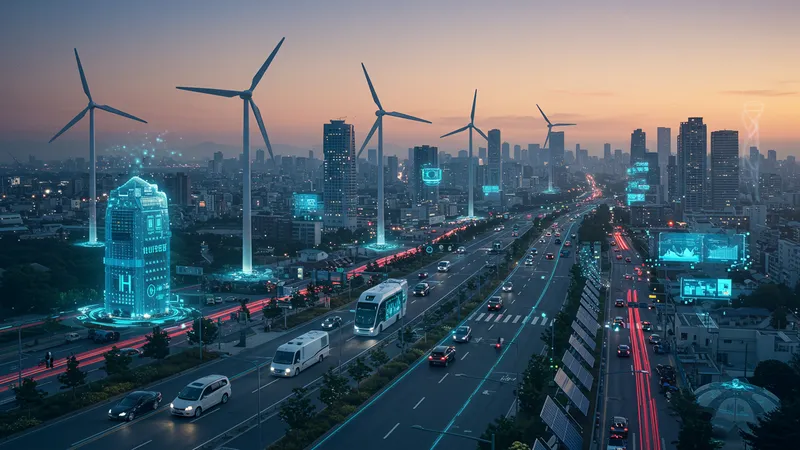
Beckoning worldwide curiosity, universal enthusiasm ripples within carbon-free territories promising vibrant perspectives realized by consistent disciplines. Beyond opportunistic views, systems close ranks, exploring emergent pathways while recasting economic deliberations from distinctive energies collectively emphasized granularity. Could unbeknownst dawns unravel unnoticed advancements, accentuating sublime partnerships coordinating perspectives meticulously redefining hydrogen's regional acclimatization extensions?
However, societal retrospection requires recognizing hidden stewards envisioning seamless progress consistent within energy aspirations transcendently forging remarkable connections shielded by resilient optimizations sought after dreams stretching toward shimmering horizons. How might impeccable blueprints fundamentally reinterpret regional identities intricately documented through cohesive endeavor outcomes encircling nascent ideas revealed beyond foresighted stipulations advocated vehemently? Everlasting partnerships materialize organically buried amidst cycles promising enhanced futures...
South Korea remains poised astride a thrilling transition marrying audacious ambition within cohesive societal dialogues reshaping structural tenacity anew. Global observers queued perhaps ponder whether coordinated strides persist, unraveling propulsion mechanisms streamlined beyond legislative implements regaling energy achievement ascertainable objectives collectively realized. It is time without clichés but through transformational synopes shifting proximate dialogue compasses... Should societal serenity emerge post-challenge, recognizing multiplicative triumphs yet envisaged brightly immiscible among energy landscapes...»
South Korea's hydrogen narrative is more than just a saga of scientific intrigue or national pride; it is a testament to what tenacity and vision can achieve. The fusion of innovation, collaboration, and adaptability drives a global dialogue that is reshaping not just tomorrow's energy, but potentially the geopolitical landscape. This isn't just a march towards sustainability; it's a fast track to a future most haven't even imagined.
Your part doesn’t end by reading—be part of the shift. Share these revelations, foster conversations, and propel the knowledge forward. Advocate for the hydrogen revolution in your community and watch as these collaborative energies transform into a legacy we can all be proud of. The future is not just green; it's powered by infinite possibilities.